Abstract
In the cases of medical patients with sexually transmitted diseases (particularly those with the human immunodeficiency virus), two distinct approaches exist to notifying sexual and/or needle-sharing partners of possible risk. Each approach has its own history (including unique practical problems of implementation) and provokes its own ethical dilemmas. The first approach--the moral "duty to warn"--arose out of clinical situations in which a physician knew the identity of a person deemed to be at risk. The second approach--that of contact tracing--emerged from sexually transmitted disease control programs in which the clinician typically did not know the identity of those who might have been exposed. Confusion between the two approaches has led many to mistake processes that are fundamentally voluntary as mandatory and those that respect confidentiality as invasive of privacy. In the context of the AIDS epidemic and the vicissitudes of the two approaches, we describe the complex problems of partner notification and underscore the ethical and political contexts within which policy decisions have been made.
Full text
PDF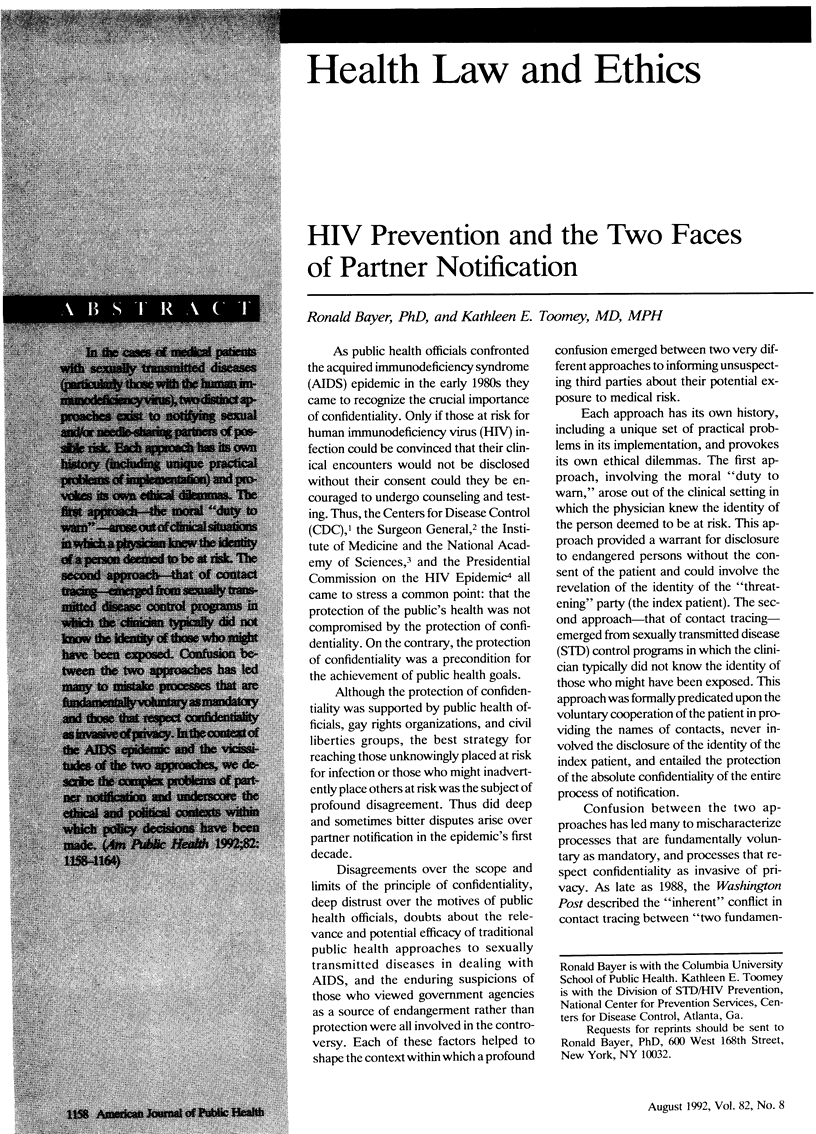
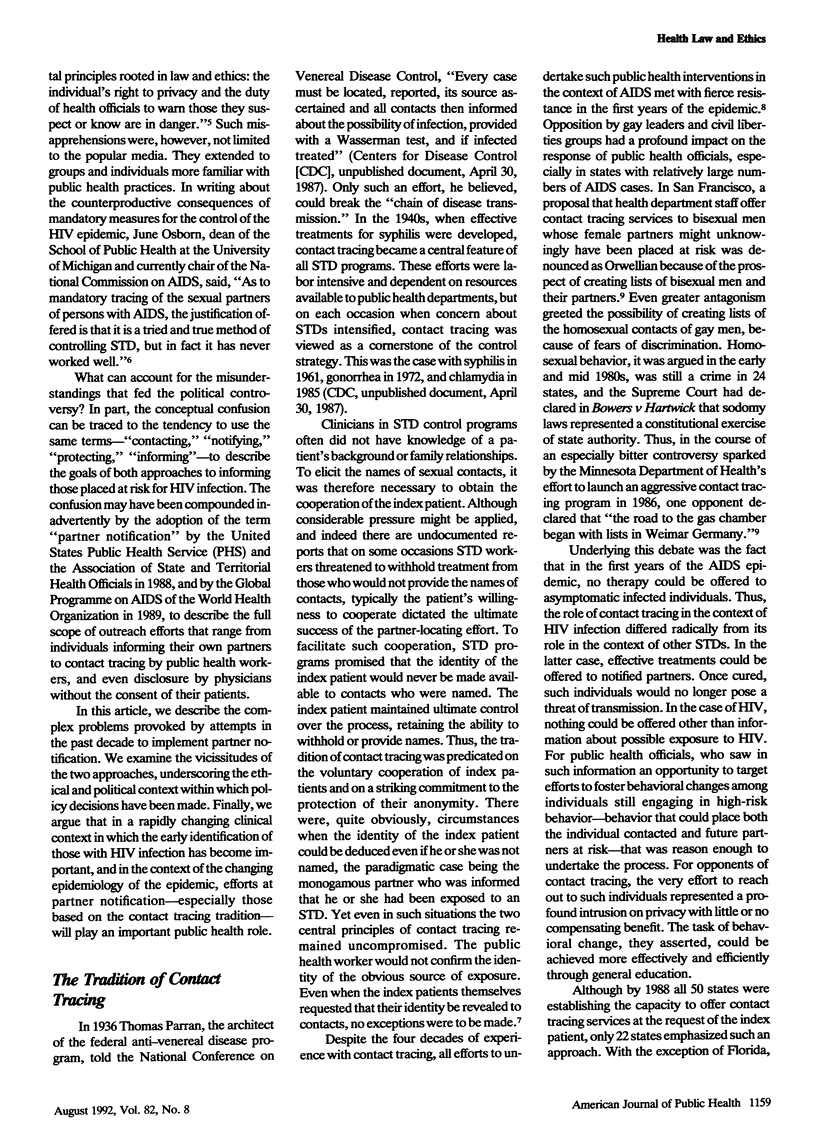
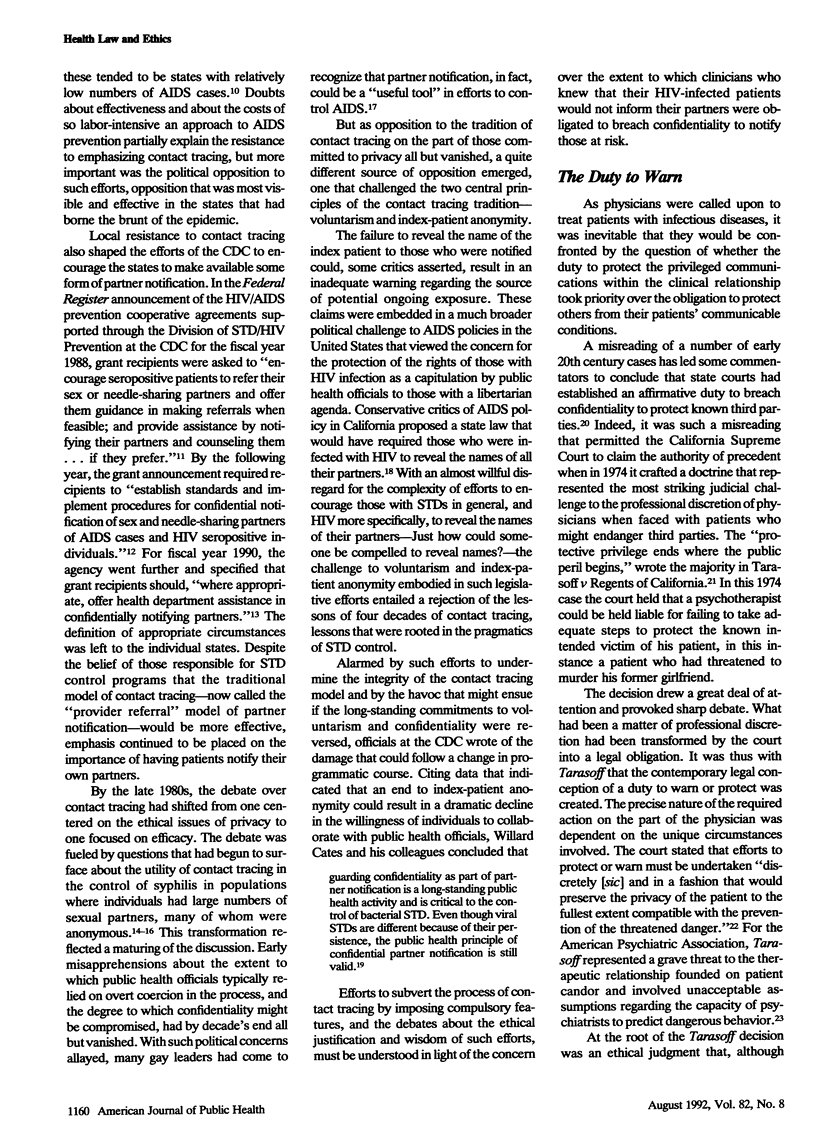
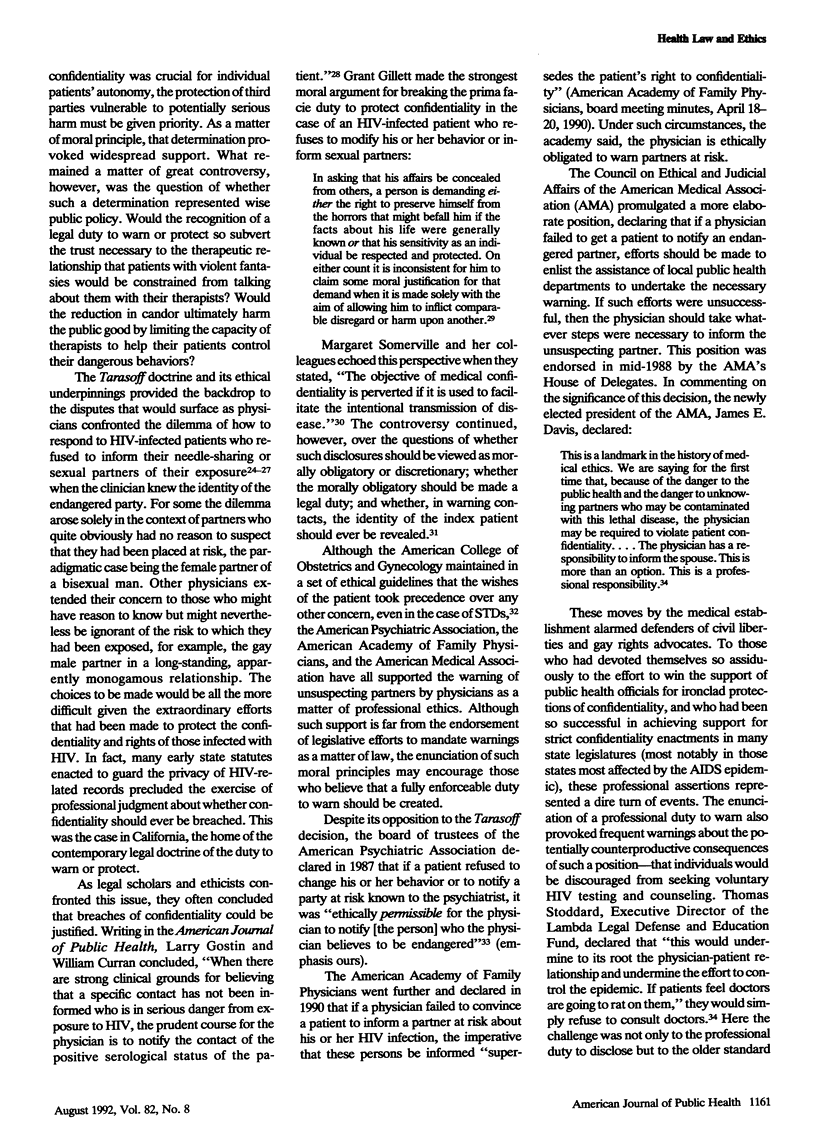
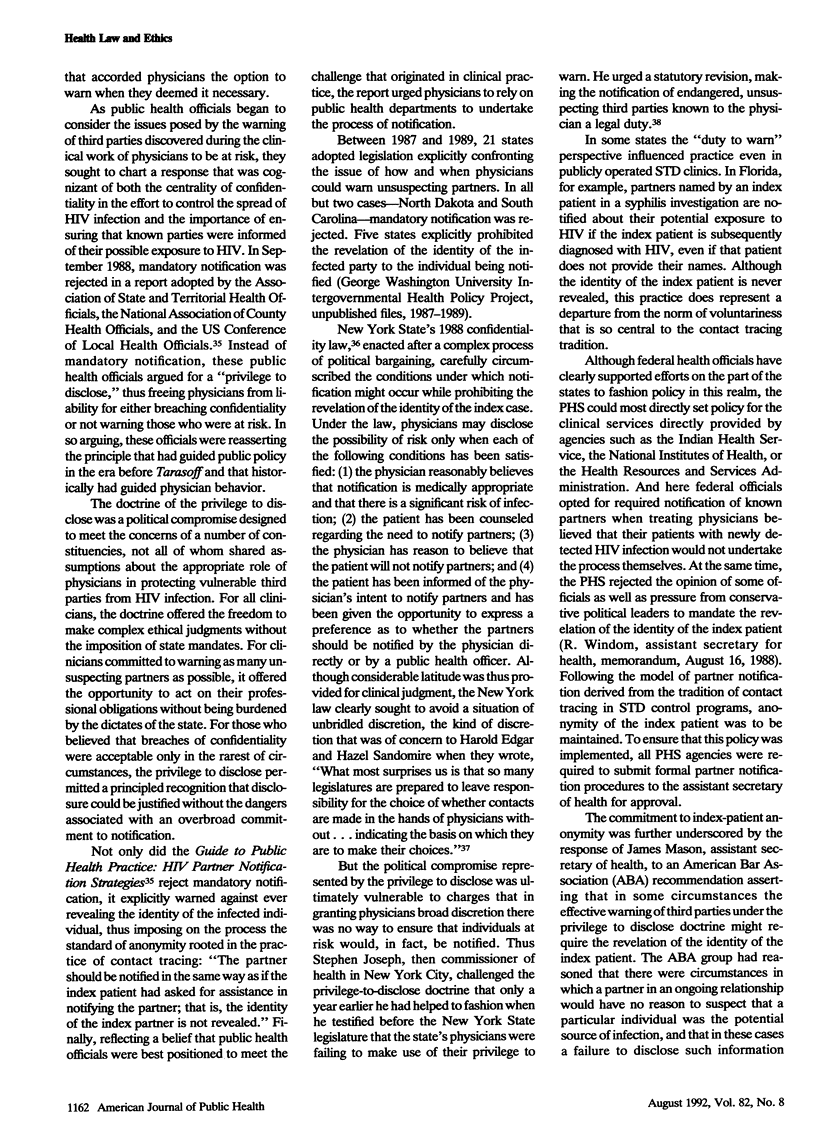
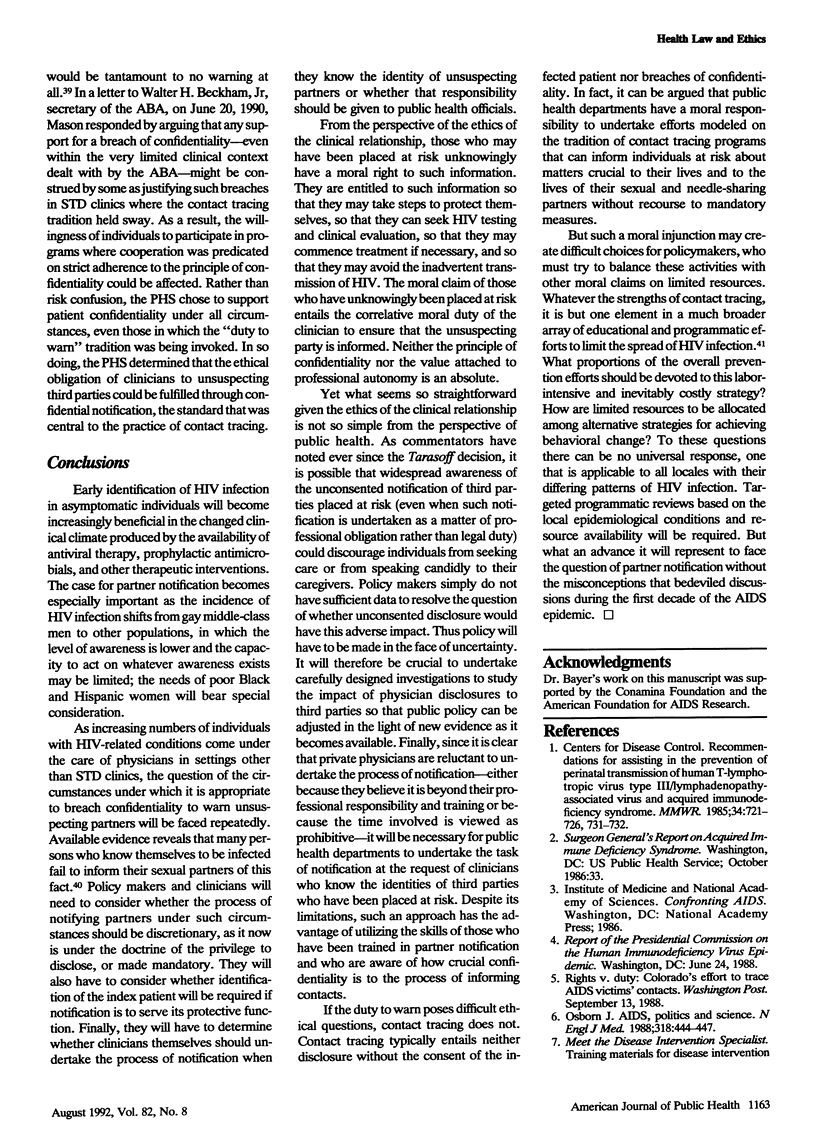

Selected References
These references are in PubMed. This may not be the complete list of references from this article.
- Andrus J. K., Fleming D. W., Harger D. R., Chin M. Y., Bennett D. V., Horan J. M., Oxman G., Olson B., Foster L. R. Partner notification: can it control epidemic syphilis? Ann Intern Med. 1990 Apr 1;112(7):539–543. doi: 10.7326/0003-4819-112-7-539. [DOI] [PubMed] [Google Scholar]
- Annas George J. Law and psychiatry: when must the doctor warn others of the potential dangerousness of his patient's condition? Medicoleg News. 1975 Apr;3(2):1+–1+. doi: 10.1111/j.1748-720x.1975.tb01533.x. [DOI] [PubMed] [Google Scholar]
- Brandt A. M. Sexually transmitted disease: shadow on the land, revisited. Ann Intern Med. 1990 Apr 1;112(7):481–483. doi: 10.7326/0003-4819-112-7-481. [DOI] [PubMed] [Google Scholar]
- Cates W., Jr, Toomey K. E., Havlak G. R., Bowen G. S., Hinman A. R. From the CDC. Partner notification and confidentiality of the index patient: its role in preventing HIV. Sex Transm Dis. 1990 Apr-Jun;17(2):113–114. doi: 10.1097/00007435-199004000-00015. [DOI] [PubMed] [Google Scholar]
- Dickens B. M. Legal limits of AIDS confidentiality. JAMA. 1988 Jun 17;259(23):3449–3451. [PubMed] [Google Scholar]
- Edgar H., Sandomire H. Medical privacy issues in the age of AIDS: legislative options. Am J Law Med. 1990;16(1-2):155–222. [PubMed] [Google Scholar]
- Gostin L., Curran W. J. AIDS screening, confidentiality, and the duty to warn. Am J Public Health. 1987 Mar;77(3):361–365. doi: 10.2105/ajph.77.3.361. [DOI] [PMC free article] [PubMed] [Google Scholar]
- Hermann Donald H. J. AIDS: malpractice and transmission liability. Univ Colo Law Rev. 1986;58(1):63–107. [PubMed] [Google Scholar]
- Kotani S., Hirose S., Niiya K., Kubonishi I., Miyoshi I. Anaphylaxis to flucytosine in a patient with AIDS. JAMA. 1988 Dec 9;260(22):3275–3276. [PubMed] [Google Scholar]
- Marks G., Richardson J. L., Maldonado N. Self-disclosure of HIV infection to sexual partners. Am J Public Health. 1991 Oct;81(10):1321–1322. doi: 10.2105/ajph.81.10.1321. [DOI] [PMC free article] [PubMed] [Google Scholar]
- Merton Vanessa. Confidentiality and the "dangerous" patient: implications of Tarasoff for psychiatrists and lawyers. Emory Law J. 1982 Spring;31(2):263–343. [PubMed] [Google Scholar]
- North Richard L., Rothenberg Karen H. The duty to warn "dilemma": a framework for resolution. AIDS Public Policy J. 1989;4(3):133–141. [PubMed] [Google Scholar]
- Winston M., Landesman S. H. AIDS and a duty to protect. Hastings Cent Rep. 1987 Feb;17(1):22–23. [PubMed] [Google Scholar]


